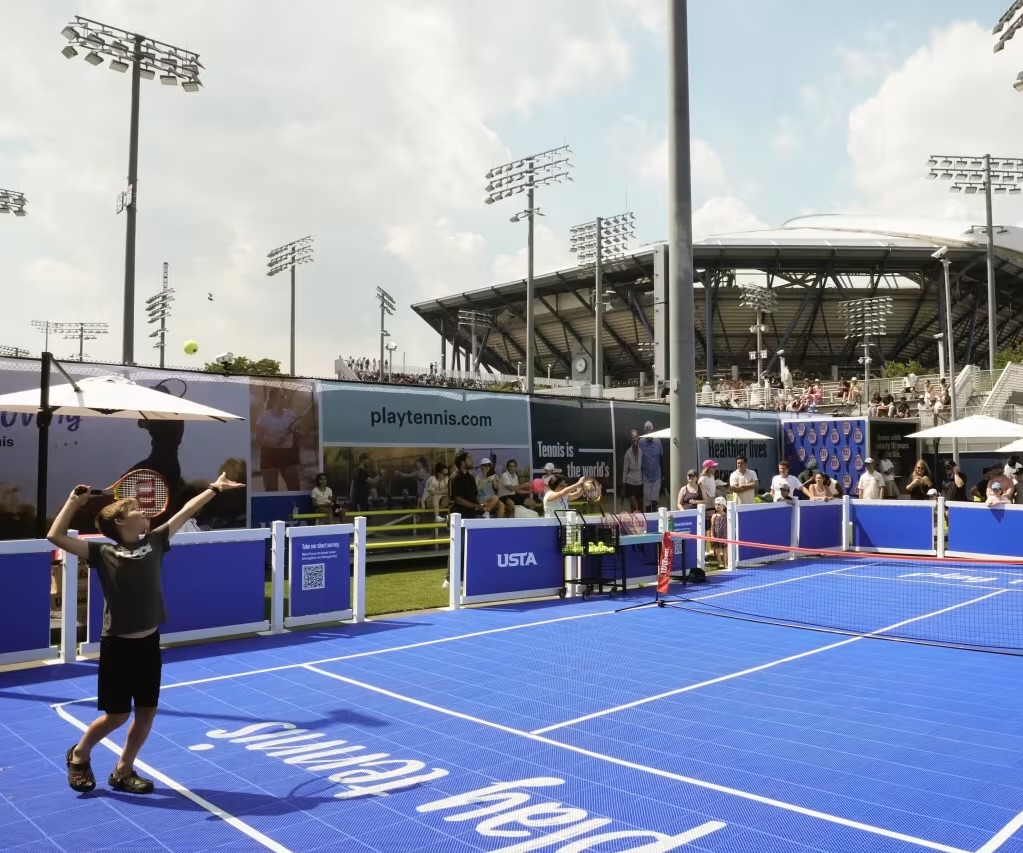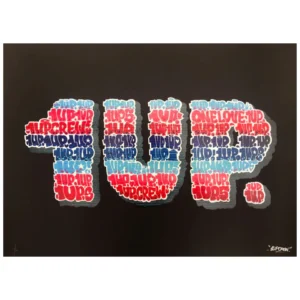In recent years, the United States has witnessed an unexpected battle unfolding on its courts. Tennis, a sport steeped in tradition and characterized by its elegance and storied history, is finding itself pitted against the rapid rise of pickleball—a relatively new phenomenon that has surged in popularity, especially during the pandemic years. This rivalry, which might appear trivial at first glance, speaks volumes about more profound shifts in recreational sports, generational preferences, and the societal battle for space and resources.
From Obscurity to Dominance
Pickleball’s journey to becoming a household name is a classic example of a grassroots movement catching fire in the mainstream. Originating in the mid-1960s as a casual backyard game, pickleball remained under the radar for decades. The sport’s appeal lies in its accessibility—it can be played by individuals of almost any age or skill level. It requires less physical exertion compared to tennis and has a shorter learning curve. This has made it particularly attractive to older generations and those looking for a less strenuous alternative to tennis.
However, the sport’s appeal has not been limited to retirees. During the COVID-19 pandemic, pickleball saw an explosion of interest as lockdowns pushed people to seek outdoor recreational activities that were safe and enjoyable. Communities across the U.S. began converting unused or underused tennis courts into pickleball courts. The sport’s growth, which the Sports & Fitness Industry Association estimates to be around 40% annually since 2020, has led to an increased demand for court space. This demand has created friction with the tennis community, which sees the encroachment of pickleball as both a logistical issue and a cultural threat.
Court Conversions and the Battle for Space
The most tangible manifestation of this conflict is the conversion of tennis courts into pickleball courts. The U.S. Tennis Association (USTA) has reported that roughly 10% of tennis courts in the country have been taken over or repainted for pickleball since the sport’s boom began. This figure is significant because it not only reflects the growing popularity of pickleball but also hints at an ongoing reallocation of resources.
Pickleball courts can often be created by painting new lines over existing tennis courts, essentially splitting one tennis court into two or more smaller pickleball courts. This process, while seemingly efficient, has sparked outrage among many tennis players, who argue that these conversions are undermining the availability of spaces for traditional tennis matches and practice sessions. The friction is more than just about paint on asphalt—it’s a battle over territory, identity, and legacy.
This tension has led to a phenomenon dubbed “court poaching,” where players of one sport show up unannounced at courts designated for the other sport, leading to conflicts and sometimes heated altercations. The USTA and local governments have been drawn into these disputes, trying to broker compromises or establish shared-use schedules to placate both groups. However, the underlying issue remains: there are simply not enough courts to go around, and as pickleball continues to grow, this imbalance will only become more pronounced.
Cultural and Generational Divides
Beneath the logistical struggle for court space lies a deeper cultural divide. Tennis, with its long-established rules, strict etiquette, and associations with prestige, has often been seen as a more serious sport. Its prominence in elite sporting events like Wimbledon and the U.S. Open has cemented its image as a sport of discipline and sophistication. Pickleball, on the other hand, has cultivated an image of casual fun. Its informal origins, combined with its current popularity among retirees and community centers, have made it seem less formal and more inclusive.
This difference in perception has fueled a sense of resentment from both sides. Many tennis enthusiasts view the rise of pickleball as a degradation of court culture, seeing it as a sport that undermines the dignity and exclusivity that tennis courts have historically represented. Pickleball advocates, in turn, see the tennis community as gatekeepers resistant to change—an older generation clinging to a dwindling number of players and unwilling to share space with a burgeoning new activity.
The generational divide is also evident in the demographics of the two sports. While tennis tends to attract players of various ages, its core group remains older individuals who have been playing for years or even decades. Pickleball, on the other hand, is drawing younger players in increasing numbers. What was once considered a “retiree’s sport” is now being embraced by millennials and Gen Z, thanks to social media exposure and its status as a trendy, easy-to-learn sport. This influx of younger players is changing the face of pickleball and deepening its rivalry with tennis.
Impression
Media coverage and social media influencers have played a significant role in accelerating this turf war. Pickleball’s explosive growth has been fueled by a combination of viral social media content, celebrity endorsements, and a well-orchestrated PR campaign that positions the sport as a fun, social activity that everyone can enjoy. Major news outlets have reported on the sport’s growth, often framing the narrative as one of tennis vs. pickleball. This framing has only served to deepen the divide, creating a sense of competition between the two sports.
Moreover, influencers and professional athletes from other sports have been quick to jump on the pickleball bandwagon, further legitimizing its rise. The involvement of personalities like NBA stars or former tennis pros in pickleball tournaments has added a layer of prestige to a sport that was previously seen as lacking seriousness. Tennis, meanwhile, has struggled to capture similar buzz, as its longstanding traditions and competitive nature do not lend themselves as easily to the casual, social media-friendly image that pickleball projects.
The battle between tennis and pickleball is not just cultural—it’s also economic. The rise of pickleball has created new opportunities for businesses, from paddle manufacturers and apparel companies to court builders and club owners. The sport’s low barrier to entry and minimal equipment requirements have made it highly marketable, and companies are eager to capitalize on its growing popularity.
On the flip side, the tennis industry, which has long enjoyed a steady flow of revenue from equipment sales, court fees, and lessons, is facing challenges. Some tennis clubs have reported declines in membership as players gravitate toward pickleball, which is often cheaper and easier to participate in. This shift is leading some clubs to diversify their offerings, incorporating pickleball into their programs in an attempt to attract new members and retain existing ones.
The future of the tennis-pickleball rivalry remains uncertain, but it’s clear that the tension is far from over. As pickleball continues to grow, the pressure on tennis to accommodate or push back will intensify. The issue of court space, while a current flashpoint, may only be the beginning of a larger conversation about the role and value of different sports in American recreational life.
Some potential resolutions could include the construction of dedicated pickleball courts to alleviate pressure on shared spaces, or the development of multi-use facilities designed to host both sports without conflict. Alternatively, we may see further segmentation of recreational spaces, with communities opting to prioritize one sport over the other based on local preferences and demographics.
In the meantime, efforts by organizations like the USTA and USA Pickleball to broker peace are likely to continue, but whether they will be successful in quelling the tension remains to be seen. As it stands, the rivalry between tennis and pickleball is more than just a matter of paint on courts—it’s a clash of identities, values, and visions for the future of recreational sports in America.
Beyond the Court
The turf war between tennis and pickleball is emblematic of broader societal changes. It’s not just a clash between two sports but a reflection of shifting attitudes toward recreation, inclusivity, and space utilization. Pickleball’s rise highlights a growing desire for accessible, community-driven activities that prioritize fun and participation over competition and prestige. Tennis, meanwhile, must grapple with its place in this new landscape, balancing its rich traditions with the need to adapt to changing tastes.
Ultimately, whether these two sports can coexist peacefully or whether one will dominate the other remains to be seen. What is clear, however, is that the rivalry has sparked important conversations about how communities allocate resources and make space for emerging trends. The battle over court space, while contentious, could ultimately lead to more inclusive and dynamic recreational environments—if stakeholders are willing to engage in meaningful dialogue and find creative solutions. Until then, the turf war rages on, with no end in sight.
No comments yet.







